GUIDE: Best Wood for Woodburning + How to Choose
If you've ever wondered how to choose the best wood for woodburning, this guide is about to become your new best friend.
These 7 tips will help you choose the best wood for pyrography based on it's merits - not other people's opinions.
Now you don't need a list to fall back on.
If you'd like a list, I have those too.
But this article is going to show you how you can judge for yourself if a piece of wood is worth burning (or at least trying out).
Pin It. Save It. Share It.
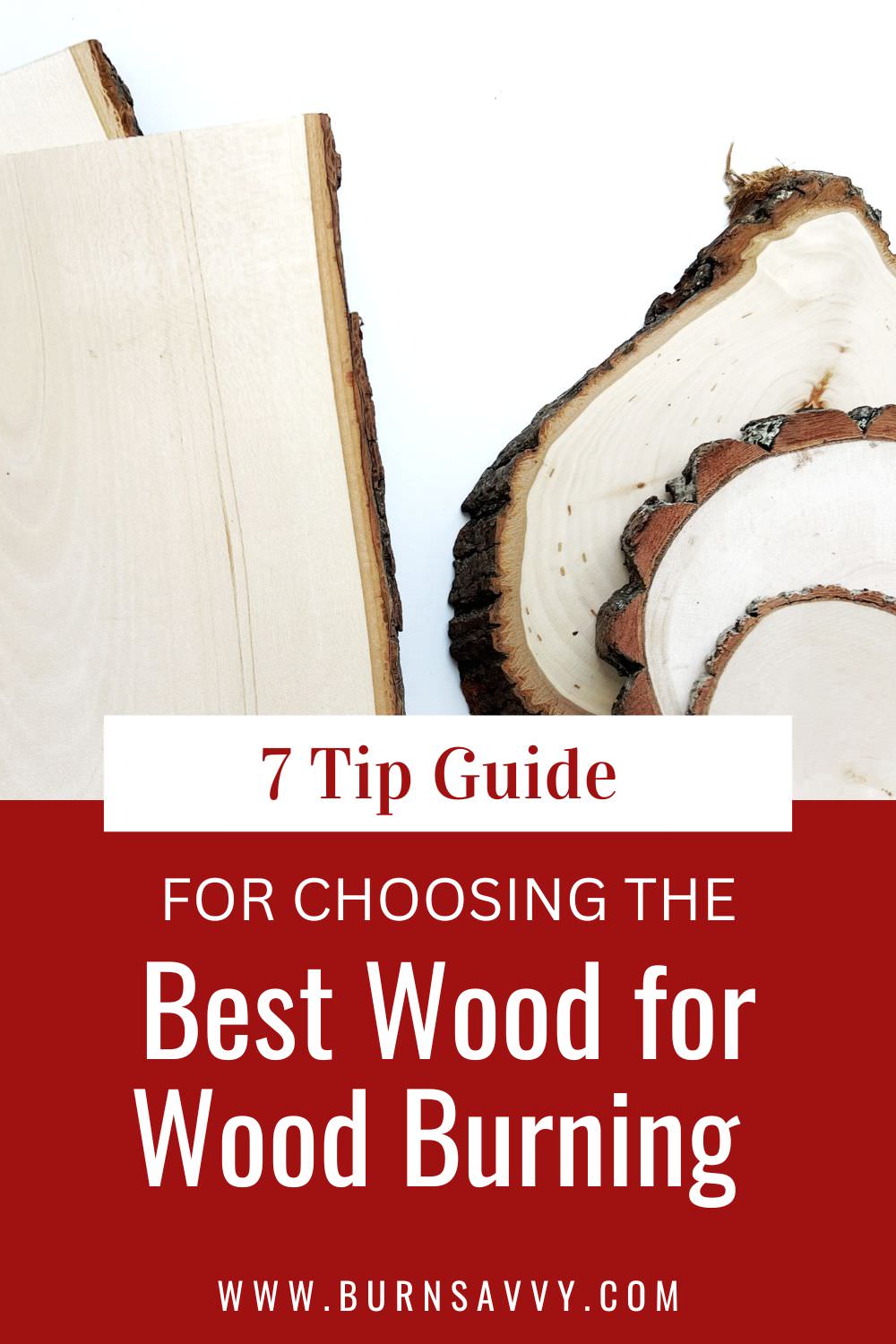
Rather not read? Watch This Instead!
Want To Learn How To Wood Burn?
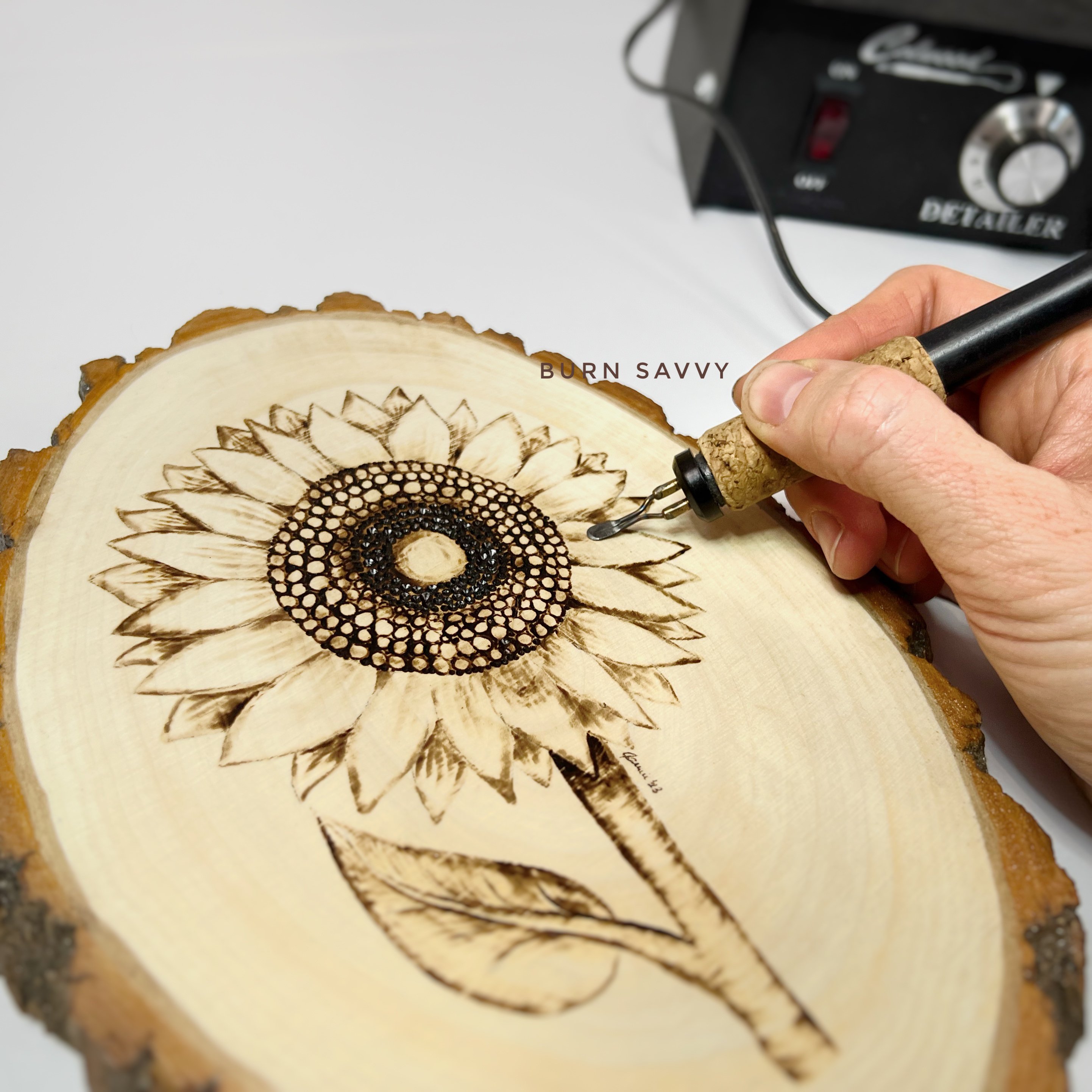
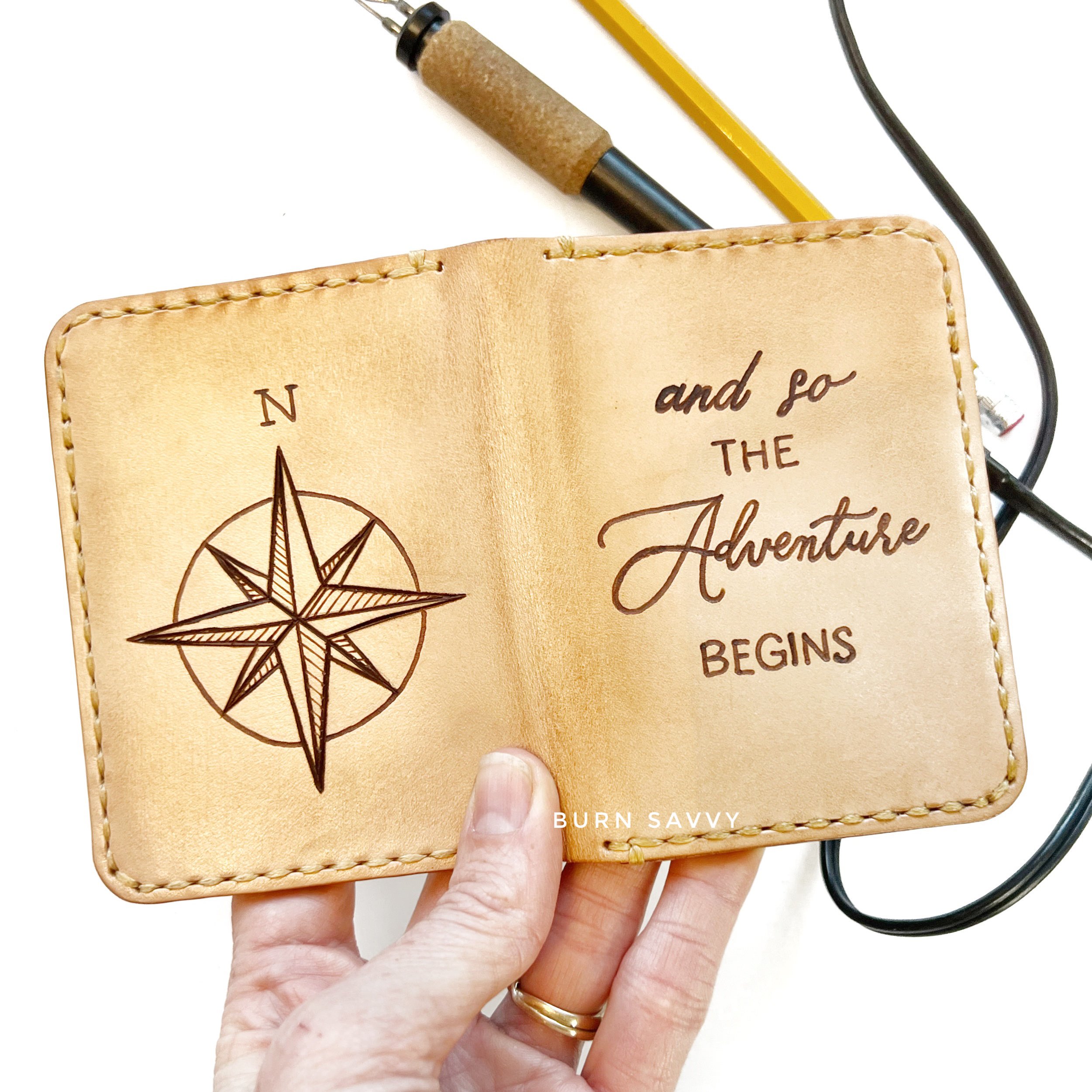

Courses are now available on the Burn Savvy YouTube channel membership!
Go see which level suits YOU best. ⇣
1. Check for Toxicity
Don't burn poisonous woods!
This might seem like a no-brainer, but I've seen people talking about wanting to burn oleander.
That's a poisonous wood.
When you burn it, oleander puts out toxic fumes just like poison ivy does when you burn it.
Nooooo thank you!
You can check wood toxicity charts and tables online.
Most of those charts don't show whether a certain wood is safe to burn. But they WILL tell you if the wood is poisonous or if the dust from sanding is toxic.
And those are great guidelines to follow.
Here's a chart on wood toxicity and allergens that I found helpful.
Ask the search engines...
Ask your favorite search engine, "Is it safe to burn [this] wood?" or, "Is [this] wood toxic?" and just replace [this] with the wood you are considering.
I found it interesting that when I searched about maple, I got hits saying it's toxic to horses... but nothing about it being toxic to humans.
(By the way, maple is definitely on my list of the best wood for woodburning. I just wanted to see what came back when I searched it.)
Usually this kind of search brings up topics about what is safe to burn in your fireplace or firepit.
As a general guide, if it's safe for the fireplace or firepit, it's generally safe for your studio.
But that leads me to the exception...
Watch yourself for reactions
I know pyros who are allergic to pine. Yes, common pine (which is a royal pain to burn if you ask me, but I still use it from time to time).
I've heard horror stories about people who had terrible reactions to sappy woods being burned.
Watch for headaches.
Watch for rashes.
Watch for allergic reactions or any other sign that you might have a sensitivity to whatever it is that you are burning.
Stop immediately if you notice any of those things.
No hobby is worth sacrificing your health.
What if you don't know what kind of wood it is and can't search for it?
Mmm that makes things a bit more tricky.
Let's say you come across a downed tree in the neighborhood or a random piece of wood in your grandmother's craft collection.
How do you know what kind of wood it is?
If you can ask a wood expert. That could be helpful...
...but how many of us know a wood expert??
Personally when I come across a piece of wood that I want to burn and I don't know what it is, I simply test it out.
Before I burn, I look for signs of chemical treatments or finishes.
As I burn, I watch myself for allergic reactions, headaches, or other signs that I'm sensitive to it.
When it comes down to it, YOU have to use your best judgement.
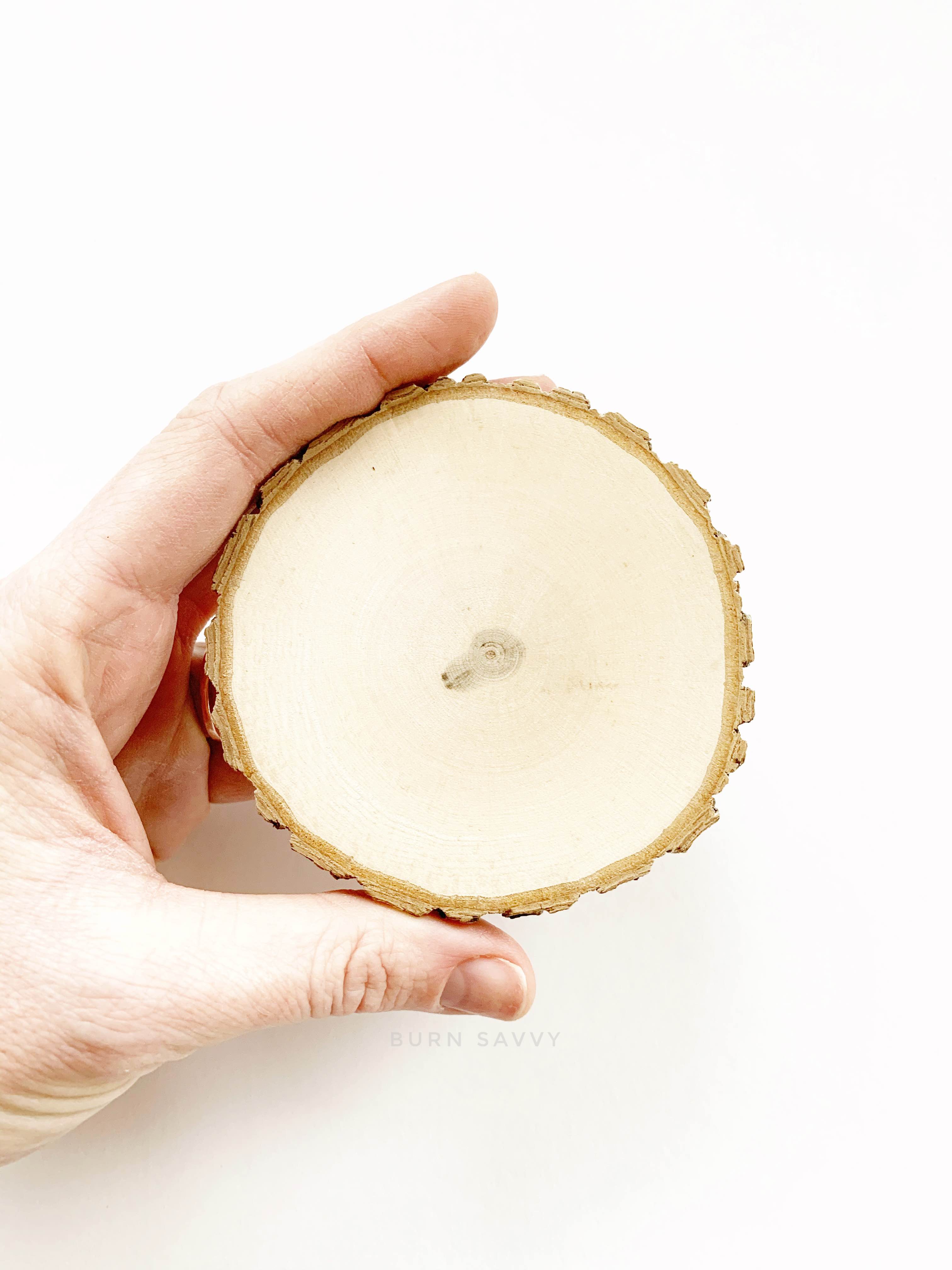
2. Only Burn Raw, Untreated, Dry Wood
When you burn woods with finishes, stains, paints, or other treatments, you are burning chemicals.
That's bad.
So if it's finished or treated, I don't recommend burning it.
If you choose to do it anyway, make sure you are using LOTS of ventilation and a GAS mask. Not a dusk mask. Not a smoke mask. It has to be rated for toxic gasses because that's what you're putting off when you burn it.
Now why does it have to be dry?
Moisture and sap repel burning. That's SUPER frustrating and can smell pretty bad.
The best wood for woodburning is raw, untreated and dry.
I prefer kiln dried wood myself.
Some companies don't tell you if they kiln dry their wood, but some do. Doesn't hurt to ask.
3. Hard VS Soft
Let's get one thing out of the way - I am NOT talking scientific terms here.
In the scientific world, hardwoods drop their leaves in the fall and softwoods are generally evergreens.
This has NOTHING to do with the physical hardness or softness of the wood.
Nada. Zero. Zilch.
Basswood and poplar (both scientifically classified as hardwoods) are softer than Douglas Fir (classified as softwood). Just look up their Janka hardness score.
But true hardness and softness makes a difference when burning.
Woods that are physically soft burn faster and at lower temperatures than woods that are physically hard.
Which to choose?
Any hardness is fine for burning. Your decision here is largely based on your preference.
I prefer burning soft woods, but I know lots of pyros who prefer a harder surface.
The best wood for woodburning projects that are going to take a lot of use - like a cutting board or furniture - would be hard woods.
4. Wood Grain
Wood grain makes a huge difference in how easy (or not) it is to get a smooth line or shading that doesn't need any touch up.
Rough grain woods like pine or oak can be quite rough to work with.
The rings in the wood grain vary in how hard or soft they are. The harder rings will repel the burning while the softer rings are easy to sink into with a burner.
Smooth grain woods like cherry or aspen are quite smooth on the other hand. They can have large variations in color, but the hardness or softness of the wood doesn't change much with the rings. It's consistent and reliable.
So you definitely want to burn wood that has a smooth wood grain.
5. Color
Different woods have different coloring. What you choose in this arena is another decision you'll have to make based on your opinion.
Do you prefer a clear canvas?
Or do you like having some natural variations that show through?
Some people view color variations a challenge. Some call it charm.
Basswood is a great example of a clear canvas. While many basswood pieces will have some form of freckles or tiny knots, it's typically the same color all across.
Aspen is a great example of color variations while still being among the best wood for woodburning. Aspen has a lot of interesting coloration on the wood - some blue, some green, some purplish. But it is buttery smooth to burn.
6. Live Edge
If you want a clean edge, it can be tricky to find the right terminology.
You will generally want to search for a...
- panel
- canvas
- circle, or
- square.
But if you like bark, then you want to look for "live edge" or "bark on wood" when you are shopping.
You can also search for...
- slabs
- rounds
- wood cookies, or
- slices.
Those generally come with wood on the edges.
Any of these terms can be used interchangeably really. But most companies that I've seen stick to this basic set of terms.
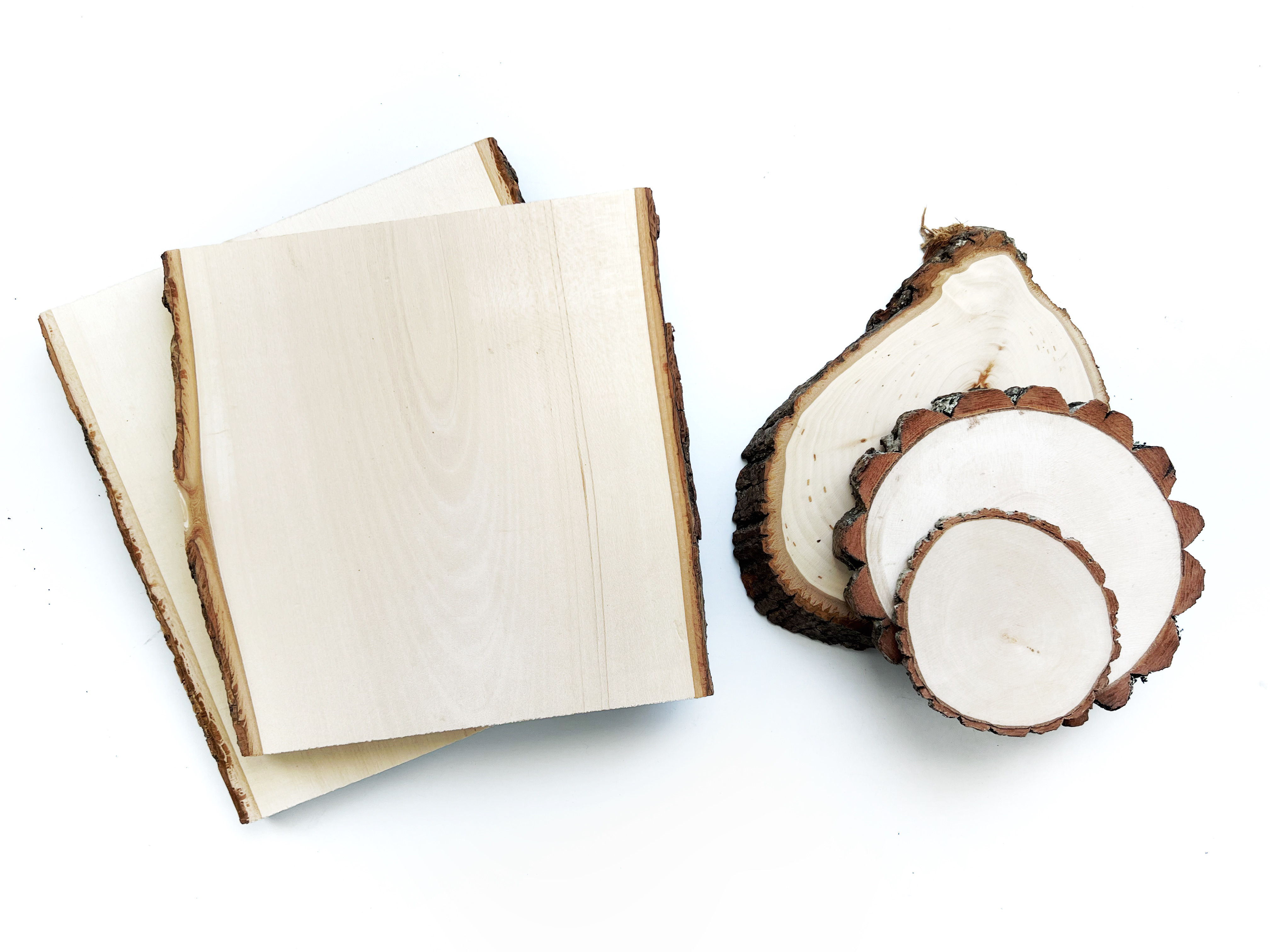
7. Slabs VS Slices
This is another big consideration when you are looking for the best wood for woodburning.
Wood slices - or rounds, cookies, circles, etc - are generally cut across the grain. That means you'll see all the tree rings.
That also means you will be burning AGAINST the grain in most cases since the grain goes all the way around.
If you are burning a smooth grained wood - like basswood, poplar, maple, cherry, etc. - then it won't really matter.
But if you are burning a rough grained wood - like pine, oak or ash - then it really DOES matter.
You'll be fighting that grain the whole time that you burn.
Wood slabs and panels on the other hand are generally cut WITH the grain. That means that the grain generally follows one direction (from left to right, or top to bottom), it doesn't run in a circle like a slice does.
Wood slabs are easier to burn because there is less grain to fight.
Finding the Best Wood for Woodburning
So in the end you just want to make sure that the wood you are looking to burn meets the criteria, it is...
- Not toxic.
- Raw, untreated and dry.
- Hard or soft depending on what you need or like.
- Has a smooth grain.
- Has coloring that you like.
- Has edging that you like (live edge or no).
- Has a grain that you can handle (slab or slice).
Meet all that criteria, and you have the best wood for woodburning.
Pin It. Save It. Share It.
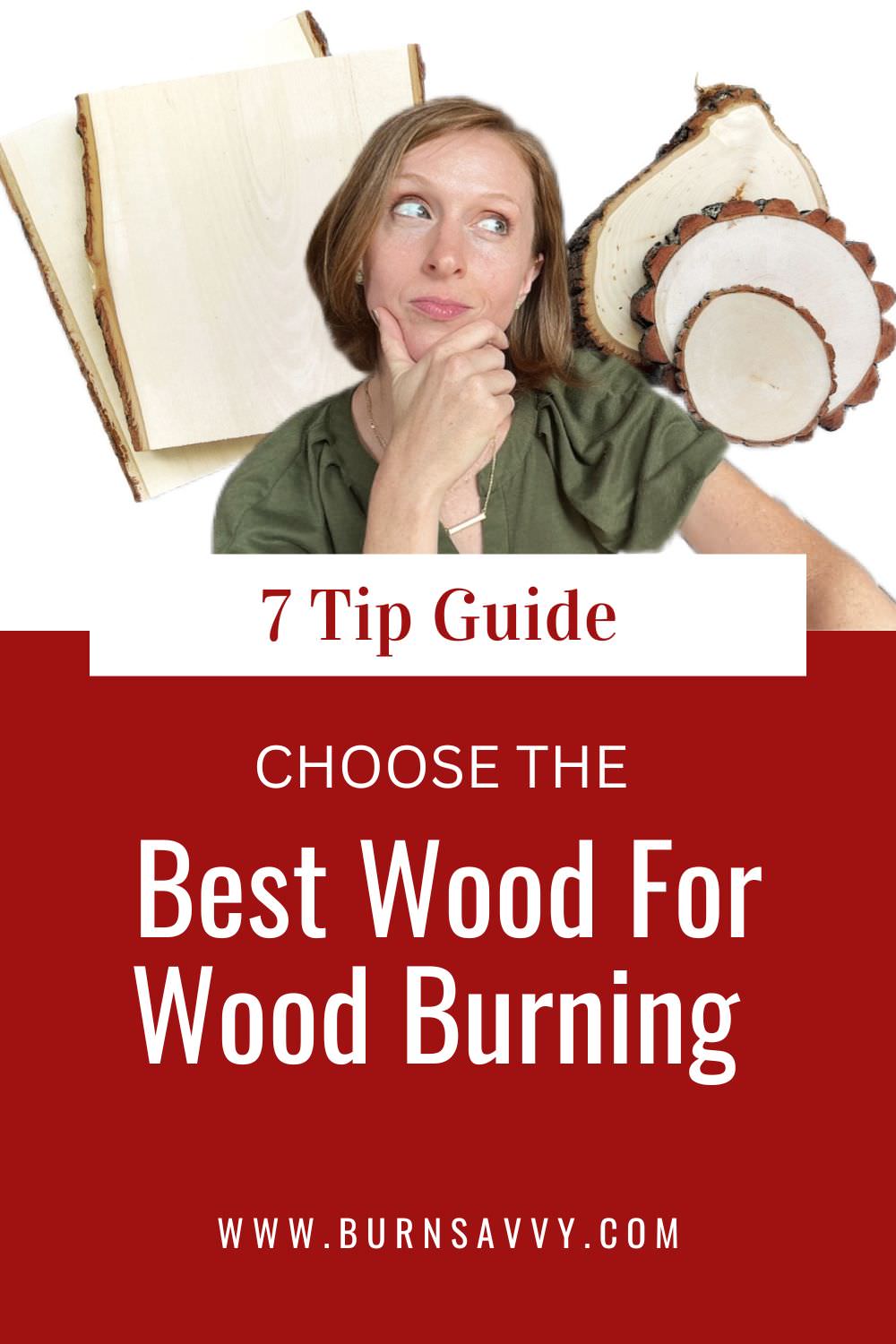
Want to seriously up your pyrography game?
I'm spilling my pyrography secrets. Don't miss out on...
- Your FREE guide to woodburning tips & their uses
- Helpful tips, hacks & articles
- First dibs on upcoming courses
- Notice of retreats, challenges, and other pyrography events
- and so much more coming!
So go ahead. Subscribe. Consume. Enjoy.
You deserve it.
⇣ Enjoying your FREE pyrography tips & techinques? ⇣
I am delighted you find them helpful!
If you want some easy ways to give back, here are some ideas that also help YOU level up YOUR wood burning game...
- Watch my YouTube videos (that's totally FREE).
- Buy your woodburning products through my affiliate links which throw me a dime or two at zero extra cost to you (read about affiliate links here).
- Take the pyrography courses that I've poured my heart and soul into helping you burn like a boss!
- Join in the woodburning retreats - that's really like giving back to yourself, actually. ;)
Thanks for helping me keep creating free, delightful, and helpful woodburning content for YOU and pyros like you.